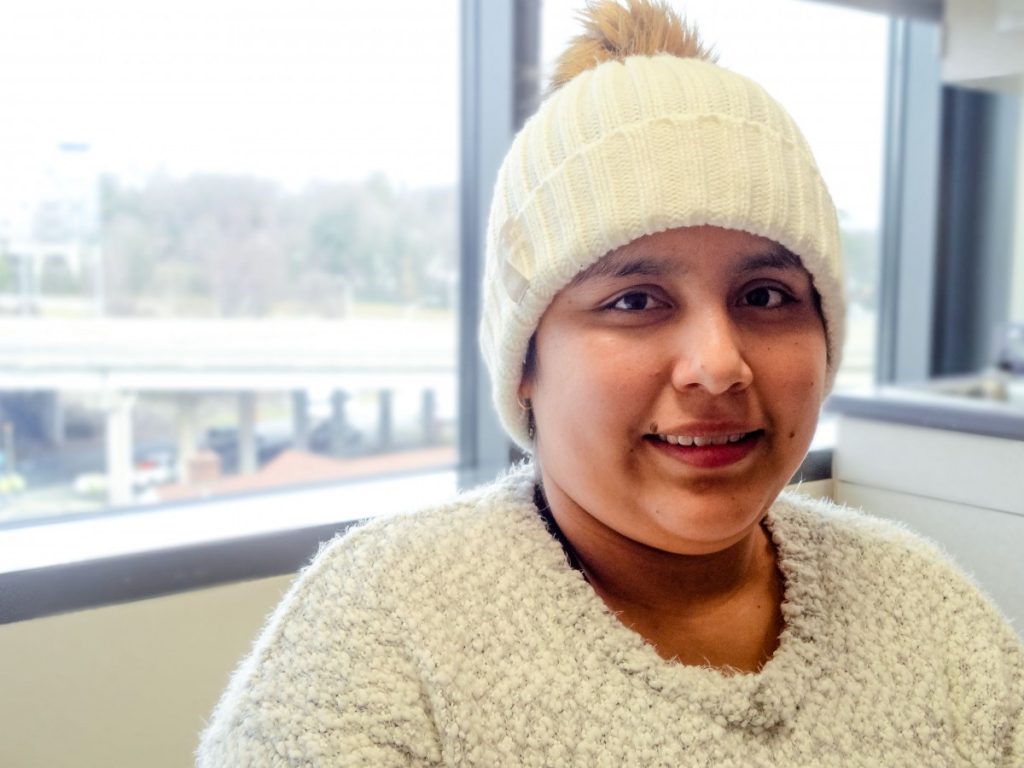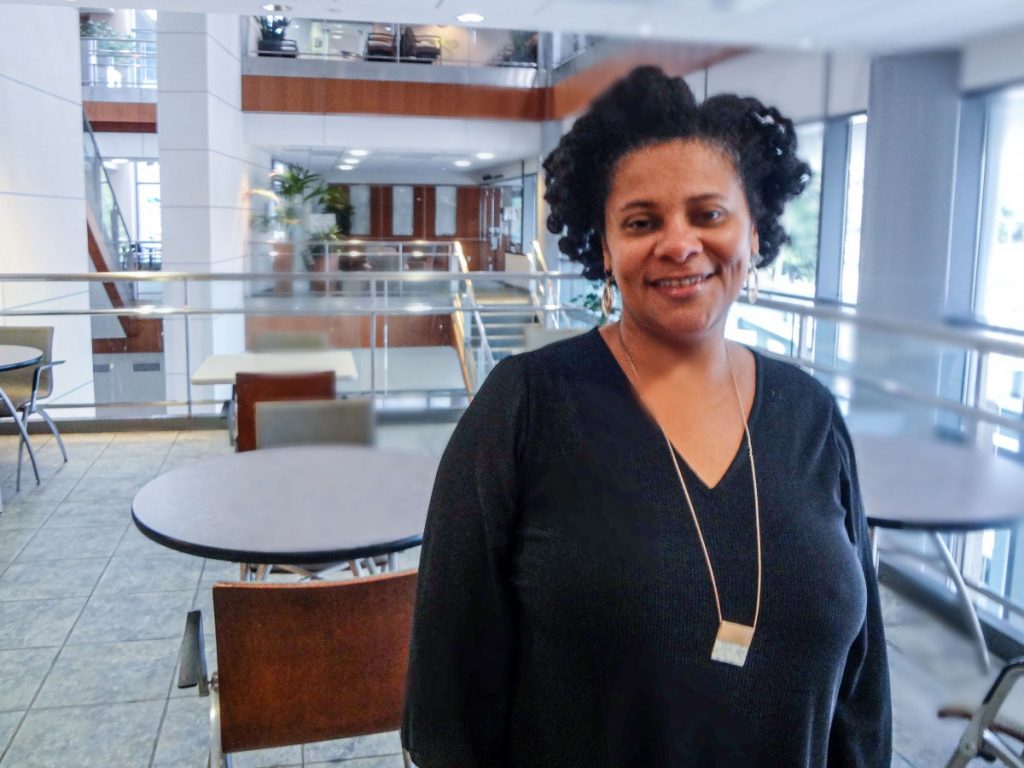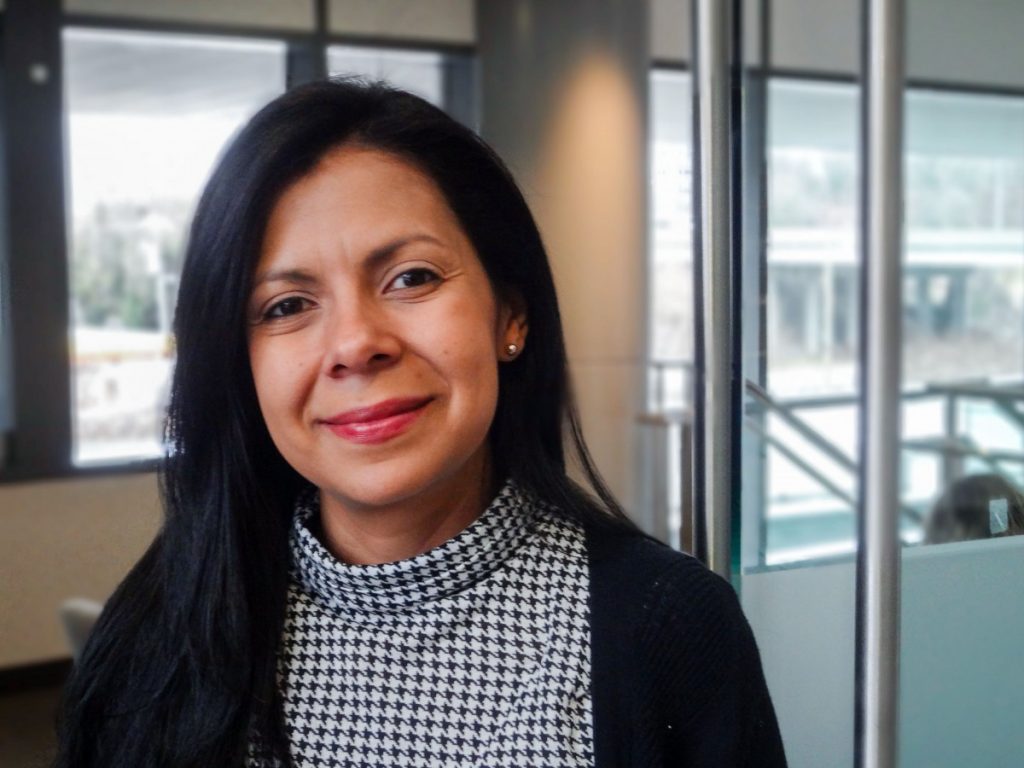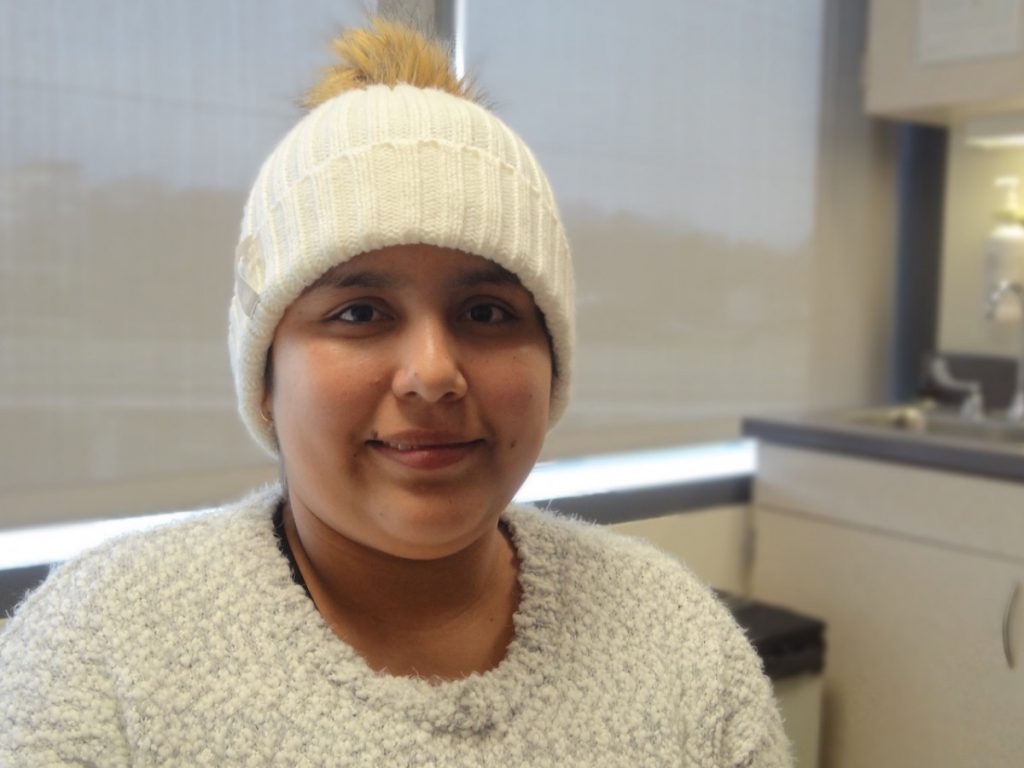
Soledad Estrada-Castrejon felt self-conscious about her rosary. It wasn’t that anyone had said anything negative. Still, she wasn’t entirely comfortable clutching her beads and praying around people she didn’t know. Maria Alejandra Combs understood and offered Estrada-Castrejon reassurance.
Estrada-Castrejon was born in Mexico; Combs in Venezuela–different cultures in many respects, quite similar in others. Both countries are predominantly Catholic.
Combs is the Hispanic patient navigator at Wake Forest Baptist Health Comprehensive Cancer Center in Winston-Salem, North Carolina. Estrada-Castrejon, 26, has stage 4 ovarian cancer and says Combs makes her journey less arduous.
“I feel comfortable telling her things,” Estrada-Castrejon says.
In big and small-but-significant ways, Combs serves as a guide for her Hispanic patients. She explains next steps, assists with forms, helps connect them with resources both within the hospital system and beyond. She provides emotional support.
Estrada-Castrejon was initially being treated in Hickory, a little more than an hour away. She came to Wake Forest Baptist for surgery and was soon introduced to Combs.
“She’s really awesome,” Estrada-Castrejon says. Cancer and its treatment is a bewildering experience for anyone. Estrada-Castrejon is grappling with financial issues, concerns for her family, depression. With Combs on her side, “I feel better. Yeah, much better.”
Dismantling Barriers
Patient navigation was introduced in 1990 by Harold P. Freeman, a surgeon in Harlem, with a program designed to eliminate barriers to cancer screening, diagnosis, treatment and support.
Karen Winkfield, director of Wake Forest Baptist Health Comprehensive Cancer Center’s Office of Cancer Health Equity, says that Freeman was troubled by the number of African American women he was seeing with locally advanced breast cancer. He recognized the need for education on prevention and detection and available resources.
“So he recruited people from the community, lay individuals, and he gave them some basic understanding of what sorts of things are needed around breast care,” Winkfield says. “He educated them and then sent them out into the community to provide information.”

The result was a dramatic reduction in the number of women arriving in his offices with a locally advanced cancer.
Wake Forest Baptist Health adopted Freeman’s model six years ago with services for the Hispanic population and now also provides patient navigators for the African American and rural communities in its region. Combs and her population-focused navigator colleagues work in concert with nurse navigators.
“Our navigators in the population health program are really focused on the reduction of social barriers,” Winkfield explains, including transportation, food insecurity and housing. “The nurse navigators then focus on helping patients understand their clinical care.”
The cancer center’s data indicates that the most common barriers to care for Hispanic patients are financial and insurance, transportation and communication. Patients report 97 percent satisfaction with the navigation services they receive. Encouraging results are also found in prevention and early detection through outreach efforts. Nearly 90 percent of patients receive a definitive diagnosis within 45 days of an abnormal mammogram, reducing their risk of a late-stage diagnosis.
Winkfield’s team has designed a navigator acuity scale that measures and identifies the level of need of each individual and then leads them on a path to care accordingly. Each of the three patient navigators is providing assistance to 25 to 30 patients a month.
Culturally Appropriate Care
“First of all, you have to be passionate, passionate about your community,” Winkfield says of the qualities she looks for in a patient navigator. “That’s critical. Then it really depends on the community you’re serving.”
Population health navigators must understand their constituent community, she says, in order to provide culturally appropriate assistance. Cancer and cancer treatment are received and perceived differently by different cultures.
In Hispanic culture, Winkfield says, the decision-making process is often a familial one, and health care providers must recognize the importance of talking with patients in the presence of family members. “There’s a family discussion that needs to happen around how care is provided,” she says.
It’s not uncommon, Combs says, for there to be the patient and three or more family members in the room during a consultation with a doctor, with more waiting in the lobby. Providers have grown accustomed, she says, to speaking to large audiences.
Combs also notes a strong tendency among her patients to perceive cancer as a death sentence.
“They’re speaking with their provider, who’s explaining their diagnosis, and when they hear the word ‘cancer,’ they may stop listening.”
“So the information needs to be reinforced,” she says, “so that patients can have a good understanding of their diagnosis and treatment plan in order to make informed decisions about their care.”
Many of her patients nurture a strong faith; they believe that God will care for them. Combs says that while emphasizing the need for comprehensive care, providers are respectful of a patient’s religion.
Combs agrees with Winkfield on the criticality of compassion. Equally important, she says, is the courage to advocate for your patients.
Estrada-Castrejon relies on that advocacy. When asked to introduce herself, she begins, “I’m a mom.” She’s arrived this day for her visit with Combs with her husband and 3-year-old son, Jason. She’s no longer able to work; her husband picks up day jobs when he can. She’s understandably very concerned about her family’s immediate and long-term needs.

Combs helps her wade through paperwork and bureaucracies and identifies assistance opportunities– reduced prices for medications, for example.
The navigator’s first step may be helping an uninsured patient in getting financial assistance to access care. In order to apply for charity care, patients must provide an ID, income verification and proof of address. Since some Hispanic patients have no form of ID, an organization called FaithHealthNC assists with getting a community ID that the hospital accepts.
Some undocumented patients may work under another name for fear of deportation and have a challenging time showing proof of income. Or they may need assistance paying their utility bills. Combs scours the community for available resources.
The population health navigators can provide lunch and gas vouchers as needed. It’s difficult for Estrada-Castrejon to ask for such things. “I get shy,” she admits. Combs reassures her and helps bolster her confidence.
Raising Voices
“My best tool,” Combs says, “is empowering my patients. Empowerment in navigation is crucial. It’s, ‘I’m here for you, but I’m going to guide you in how to do things on your own.’ Hopefully, they’re empowered after their cancer treatment, and they can feel they can speak up– if they don’t have the information they need, they can raise their voice.” That’s often a challenge, particularly with newly diagnosed patients.

“I tell them, ‘You have the right to ask questions if you don’t understand. It’s a lot of information at one time, and if it’s not clear, you can ask. It’s not disrespectful.’ I want to help give them that tool– that ‘I can speak up and advocate for myself.’”
Combs asserts to her patients: “You’re a whole. You’re a body and mind and spirit. What are the tools that you need to feel healthy, to feel empowered, to feel that you have overall quality of life?”
Winkfield says her hope is that those who’ve been assisted by a navigator will have had a much easier time going through what is undeniably a very difficult experience– “that they know that they have somebody who they can call on should they experience a barrier to their care, someone who will respond in a way that really can help ease that journey.”
Had Estrada-Castrejon not been introduced to Maria and her nurse navigator she says, “I’d be very stressed out. I think I’d probably be crying all day, like, ‘What am I supposed to do?’”
Now, “I get to see Maria, and I get to just tell her, ‘You know, I’m having issues.’…I’m so thankful.”
This article was originally published by 100 Days in Appalachia, a digital news publication incubated at the Reed College of Media at West Virginia University.
Taylor Sisk is a Nashville-based health care reporter.


